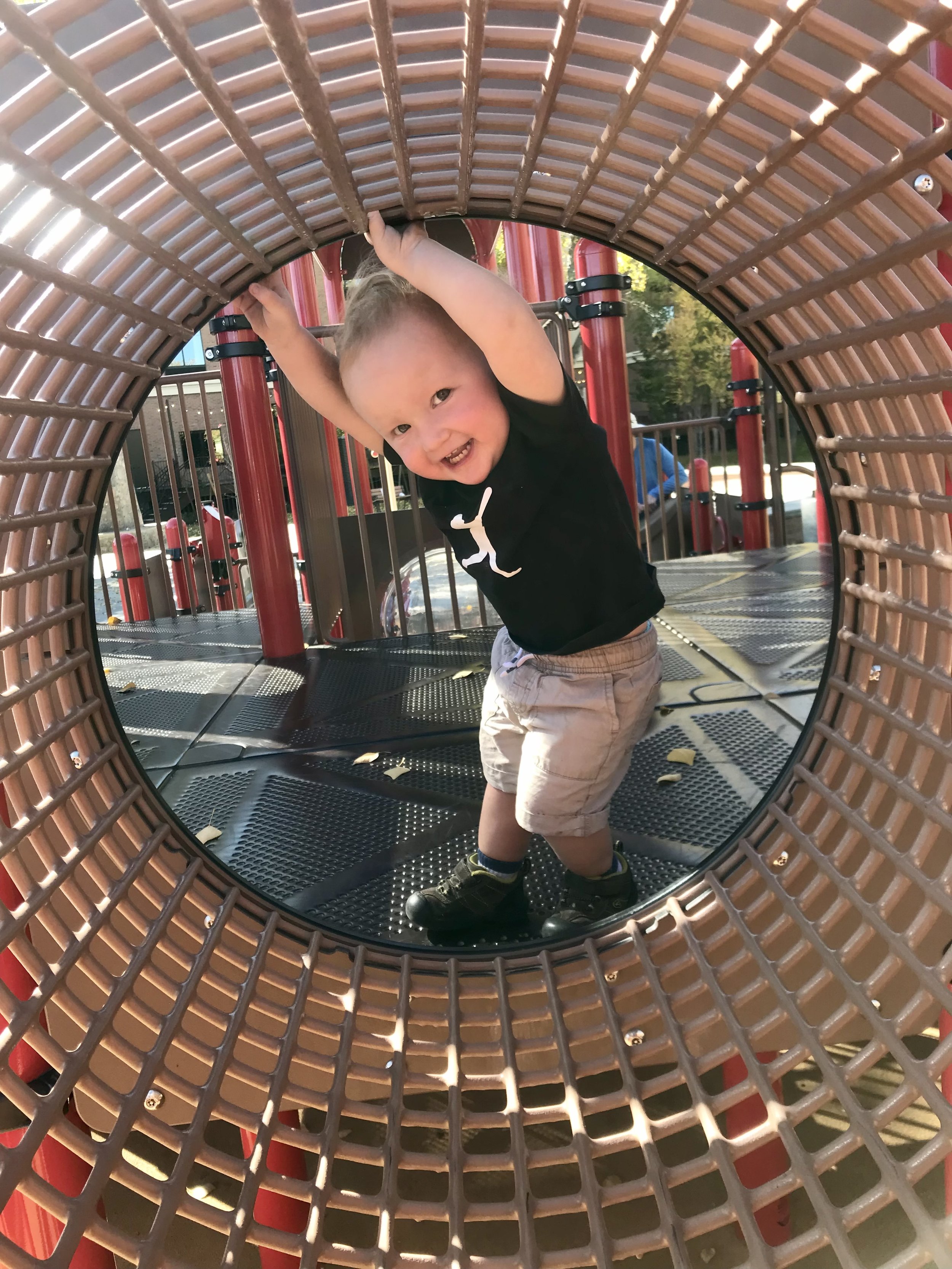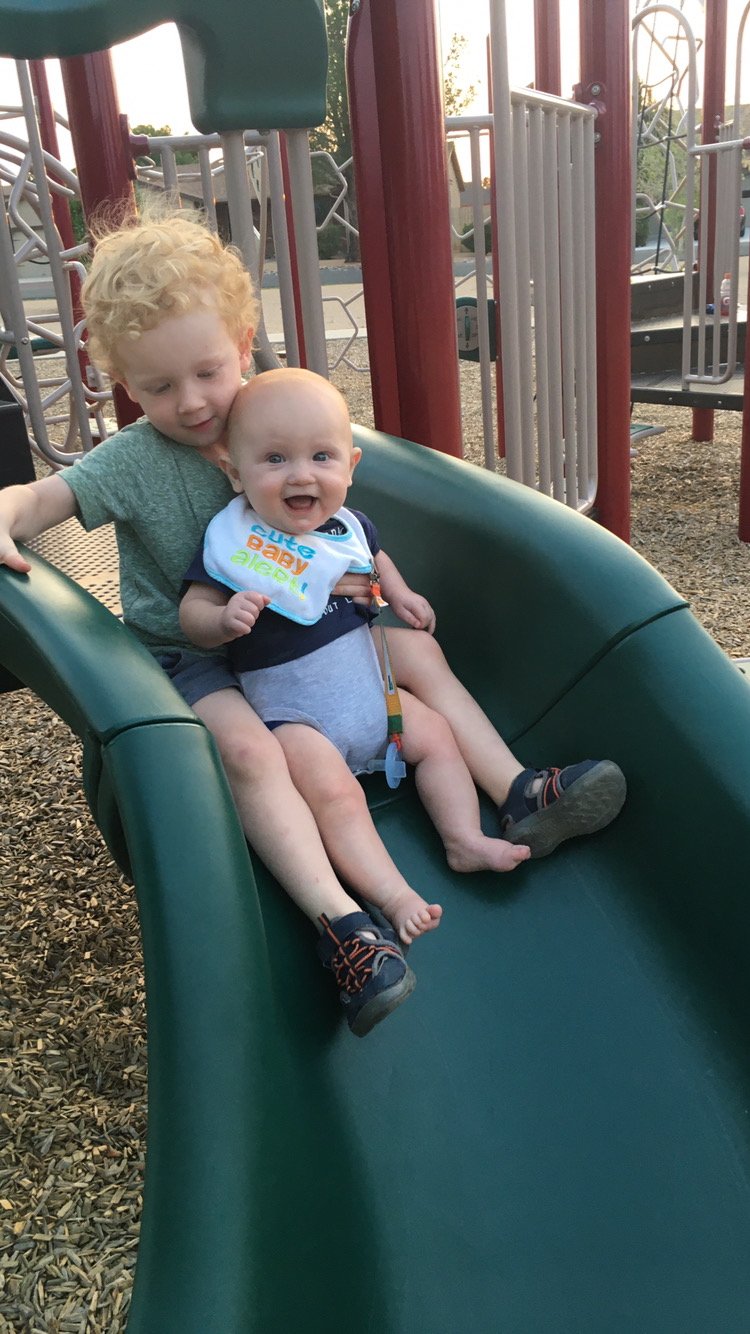What Are Vulvar Varicosities?
Written by Maribeth Newell
It’s August and I am around twelve weeks pregnant with our second child. We are in Oregon with my husband’s family on their annual vacation to the coast. On this day my husband and I are walking along the beachfront admiring the cottages and lush foliage of their yards as well as the beautiful Oregon beach, stark changes from our landscape in the southwest.
As we walk, I become increasingly aware of discomfort in my right groin. “Why are these underwear so uncomfortable today?” I am asking myself while attempting to discreetly adjust them. I assume the elastic is somehow irritating this area. I get home and immediately change my underwear thinking this will solve the issue. It sort of does, but not completely. This discomfort continued on and off for the next several days.
Upon returning home to Arizona a week later the area is still bothersome. I also notice my right groin and pubic area are slightly swollen. I schedule an appointment with my OB’s office thinking my lymph nodes are inflamed and want to make sure I don’t have an infection in an area so close to where my baby is growing.
I typically see my OB but instead see a nurse practitioner, Anna Marie, for this appointment. It was easier to get on her schedule and I wanted to be seen sooner rather than later. Anna Marie is perhaps the kindest healthcare provider I have ever encountered. She’s older and has likely cared for 10,000 pregnant people. She carries herself with a demeanor that makes me think she’s everyone's favorite grandma. I relay my concerns to her, tell her about the stinging type pain that hasn’t resolved and that I’ve noticed my inguinal lymph nodes seem to be swollen. I also mention I have noticed things look “a little veiny” in my right labia (thank you hand mirror). I lay back, feet in stirrups and she assesses me. “You’re right. I can see veins that are very apparent.”
She tells me there is no infection, nothing for concern and that the discomfort, pain and swelling are varicose veins. Vulvar varicosities to be exact.
I ask when they will go away, hoping to God they are a temporary issue, something like first trimester nausea that typically goes away or at least decreases in frequency after a certain amount of time. “They probably won’t go away until after you deliver,” she responds. She tells me there isn’t much that can be done, but there are some types of support underwear I may find helpful. She leaves the room and comes back with a photocopy of something that reminds me of a chastity belt from the Middle Ages. I take the paper and say thank you, even though I am pretty sure she has had this resource filed away since she started treating patients many, many years ago. There MUST be something more modern (Spoiler alert: there isn’t).
I leave the appointment and sit in my car. I throw the paper on the floor of the passenger seat and scream. I actually scream. I cannot believe I have to endure this for 25 more weeks!
Blood flow to the uterus is increased by about 30% during pregnancy. Thus, the vascular supply to this region is working overtime. The vasculature that supplies this area also supplies blood to… you guessed it - the vulva, labia and groin. Vulvar varicosities occur due to this significant increase in blood flow. Unfortunately, not something that’s going to change until my uterus no longer needs all that blood.
This diagnosis was very disheartening. As mentioned earlier, there’s not much in the way of treatment. The most effective interventions are avoidance of prolonged standing, elevation, and compression. I am a physical therapist who works in a hospital. At this time, I was working 40 hours/week. Every day I walk throughout the hospital and provide physical assistance to patients for all their mobility. I am rarely in a position where I can sit without compromising the safety of my patients. I was unable to elevate my pelvis unless home and had an almost two-year-old. Not super practical. Compression? See the above-mentioned 18th century chastity belt. There is no way that thing could be worn in public. Vulvar varicosities effected my day-to-day life, standing tolerance, willingness to exercise, and sex.
They got so much worse during sex (even more blood flow to the area).
Prior to my diagnosis, I had never heard of vulvar varicosities. I know now roughly 10% of pregnant people experience them and they are increasingly common with subsequent pregnancies. I felt frustrated because talking about my labial veins wasn’t exactly something I could easily mention. People with nausea get to wear their symptoms like a badge of (horrible) honor. “My pregnancy? Oh it’s been tough. I’ve been super nauseous and throwing up every day.” And they get sympathy because, well, throwing up sucks. Vulvar varicosities are hardly something I’m going to mention to the entirety of my family nor my 80-year-old patients when asked about the baby. “My pregnancy symptoms? Well… I have varicose veins in my labia.” Too much intimacy to share with people who aren’t my close family members or friends.
I started sitting as much as possible at work (still not much). I would elevate my hips nightly, and ice on the days when the pain was particularly bad. When I was roughly seven months pregnant, my mom purchased the support belt I mentioned earlier and sent it my way. The V2 supporter. I regretfully started wearing it on weekends and in the evening - basically anytime I was within the comfort of my own home. The V2 supporter is hardly something you can wear in public. Despite my griping, the belt was helpful.
The V2 supporter is essentially a lady jockstrap.
It’s made of thick spandex straps with tension that can be adjusted to provide support to your perineal area. Because you tighten the straps on the back side, they cut through your butt cheeks creating the worst “underwear line” you can imagine. I felt desperate but was honestly too vain to wear this outside my house. There is no way to conceal the fact you’re wearing this, even with very loose-fitting clothing as it divides your butt cheeks and gives a muffin top to even the thinnest of pregnant ladies.
As an avid exerciser, vulvar and labial varicosities forced me to alter my exercise routine. Each day after work, I’d come home and don the V2 supporter. I primarily rode my spin bike for cardio as the pressure from the bike seat actually felt pretty good on my perineum and was more tolerable than other forms of standing cardio. I did a lot of lower impact workouts - pilates, barre, and lots of yoga. I continued to walk my two dogs almost daily (dog walks were the only time I wore the lady jockstrap out of my home). It was very important to me to maintain physical activity. Exercise was a consistent part of my everyday life and we know it offers countless benefits to both mama and baby.
And so it went until my son was delivered. During his delivery, my OB ended up cutting a second-degree episiotomy in order to take some of the pressure off of my veins.
As I was pushing, I remember him saying, “I’m going to cut your perineum because I am afraid these veins are just going to burst. I need to take some pressure off.”
The good news about my vulvar varicosities: they were 75% improved within just a few days postpartum and continued to improve with each day that passed. Today, they rarely bother me. On rare occasions, I feel the deep sting and pain on the right side of my pubic area. I haven’t figured out the rhyme or reason that seems to cause the momentary flares.
If this is a symptom that has plagued you in your pregnancy, I commiserate! Please know they will get better! Don’t be like me- buy that freaking pelvic supporter and don’t wait until you’re seven months pregnant to do it. Swallow your shame and embrace the life of having four butt cheeks. If your spouse, sister, friend has them- offer to walk their dog or care for their kid so they can elevate their pelvis. Be like my mom and buy the compression for them. (You can find it on Amazon along with the photos of women wearing singlets to model it who clearly don’t suffer from the varicose veins because they look way too happy…).
Since the incidence of vulvar varicosities increases with subsequent pregnancies, it gives me pause when considering whether I am willing to carry another pregnancy. The pain and discomfort, the limited relief that’s offered and their long duration make me hesitant. I’m pessimistic it’s something I would experience with a third, since I did with my second. The silver lining is, as with all pregnancy things, it’s a finite experience.








